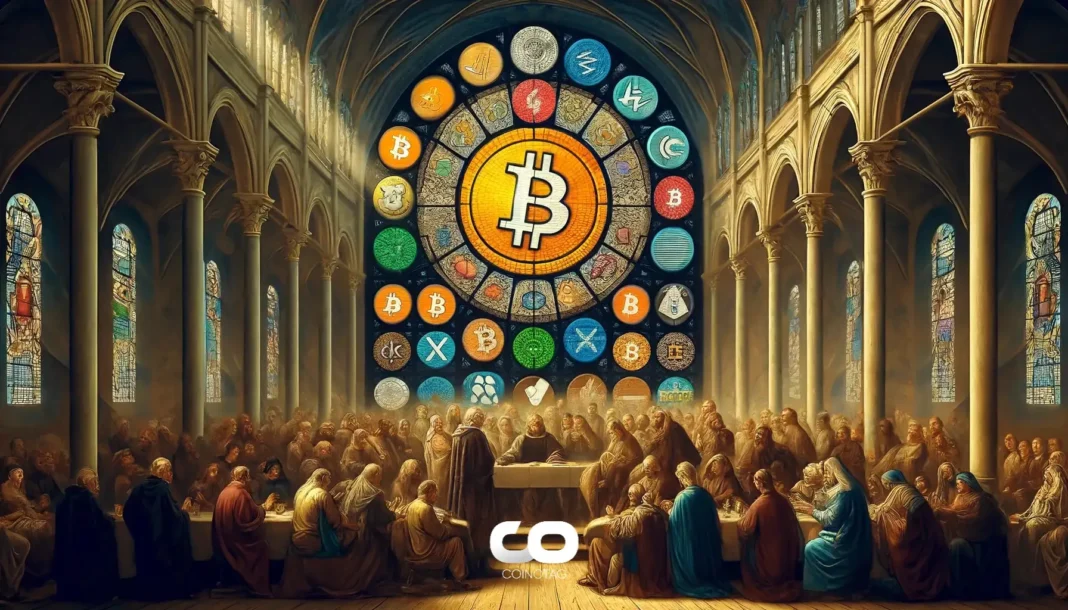-
The cryptocurrency sector is witnessing pivotal changes with upcoming U.S. stablecoin regulations and optimistic Bitcoin market forecasts for 2025, signaling a transformative phase for digital assets.
-
These regulatory developments aim to enhance transparency and security in stablecoin usage, while Bitcoin’s projected growth reflects increasing institutional adoption and technological progress.
-
According to COINOTAG, “The integration of stablecoin legislation with bullish Bitcoin projections underscores a maturing crypto ecosystem poised for mainstream financial integration.”
Explore the impact of U.S. stablecoin legislation and Bitcoin’s 2025 market outlook, highlighting regulatory shifts and investment opportunities in the evolving crypto landscape.
U.S. Stablecoin Legislation: A Regulatory Milestone for Crypto Stability
The U.S. government is preparing to introduce comprehensive legislation targeting stablecoins, a category of cryptocurrencies designed to maintain a stable value by pegging to assets like the U.S. dollar. This legislative initiative responds to the rapid growth and increased scrutiny of stablecoins, aiming to establish a robust regulatory framework that addresses critical concerns such as transparency, consumer protection, and systemic risk mitigation. By formalizing rules around issuance, reserve requirements, and operational standards, the legislation seeks to foster trust among investors and financial institutions. This regulatory clarity could serve as a catalyst for broader adoption, enabling stablecoins to function more seamlessly within traditional financial systems and enhancing their role as reliable digital payment instruments.
Implications for Market Participants and Financial Integration
Market participants, including exchanges, issuers, and investors, stand to benefit from clearer guidelines that reduce legal uncertainties and operational risks. The legislation is expected to mandate regular audits and disclosures, thereby increasing market confidence. Furthermore, by aligning stablecoin regulations with existing financial laws, the U.S. aims to prevent illicit activities such as money laundering and fraud, while promoting innovation. This regulatory evolution may encourage traditional banks and payment processors to integrate stablecoins into their services, bridging the gap between decentralized finance and conventional banking.
Bitcoin’s Market Projections for 2025: An Optimistic Investment Outlook
Bitcoin continues to attract significant attention from both institutional and retail investors, with market analysts forecasting substantial price appreciation by 2025. This bullish outlook is underpinned by several factors, including growing adoption as a hedge against inflation, increasing acceptance as a store of value, and ongoing technological enhancements within the Bitcoin network. The anticipated rise in Bitcoin’s market capitalization reflects confidence in its resilience and maturity as an asset class. Additionally, the expanding ecosystem of financial products such as ETFs and futures linked to Bitcoin further legitimizes its role in diversified investment portfolios.
Driving Factors Behind Bitcoin’s Growth Potential
Key drivers supporting Bitcoin’s projected growth include macroeconomic trends such as persistent inflationary pressures and currency devaluation, which have heightened demand for alternative assets. Technological developments, including scalability solutions and enhanced security protocols, also contribute to Bitcoin’s appeal. Moreover, increased regulatory clarity, as seen with stablecoin legislation, may indirectly bolster Bitcoin’s legitimacy by fostering a more predictable environment for all cryptocurrencies. Industry experts emphasize that Bitcoin’s decentralized nature and limited supply continue to position it as a unique asset in the global financial landscape.
The Evolution and Challenges of Decentralized Finance (DeFi)
Decentralized Finance (DeFi) remains a dynamic and rapidly evolving sector within the cryptocurrency space, leveraging blockchain technology to offer financial services without traditional intermediaries. Despite facing challenges such as regulatory uncertainty, security vulnerabilities, and market volatility, DeFi platforms continue to innovate, expanding their user base and functionality. The sector’s growth highlights a shift towards more democratized financial ecosystems, with smart contracts enabling automated and transparent transactions. As DeFi matures, it is expected to influence mainstream finance by introducing new models for lending, borrowing, and asset management.
Regulatory and Security Considerations in DeFi Expansion
Regulators are increasingly focusing on DeFi due to concerns over consumer protection and systemic risks. The absence of centralized control complicates enforcement and oversight, prompting calls for tailored regulatory approaches. Security remains a critical issue, with smart contract bugs and exploits posing significant risks to users. Nonetheless, ongoing advancements in protocol auditing, insurance solutions, and governance mechanisms aim to mitigate these vulnerabilities. The interplay between innovation and regulation will be pivotal in determining DeFi’s long-term viability and integration into the broader financial system.
Conclusion
The cryptocurrency landscape is at a crucial juncture, marked by impending U.S. stablecoin regulations and optimistic Bitcoin market forecasts that together signal a maturing industry. These developments promise enhanced stability, transparency, and investor confidence, potentially accelerating the integration of digital assets into mainstream finance. Meanwhile, the evolution of DeFi underscores the sector’s innovative potential despite inherent challenges. Stakeholders should closely monitor regulatory progress and market trends to navigate this transformative period effectively. Prudent investment strategies and informed engagement will be essential as the crypto ecosystem continues to evolve.






